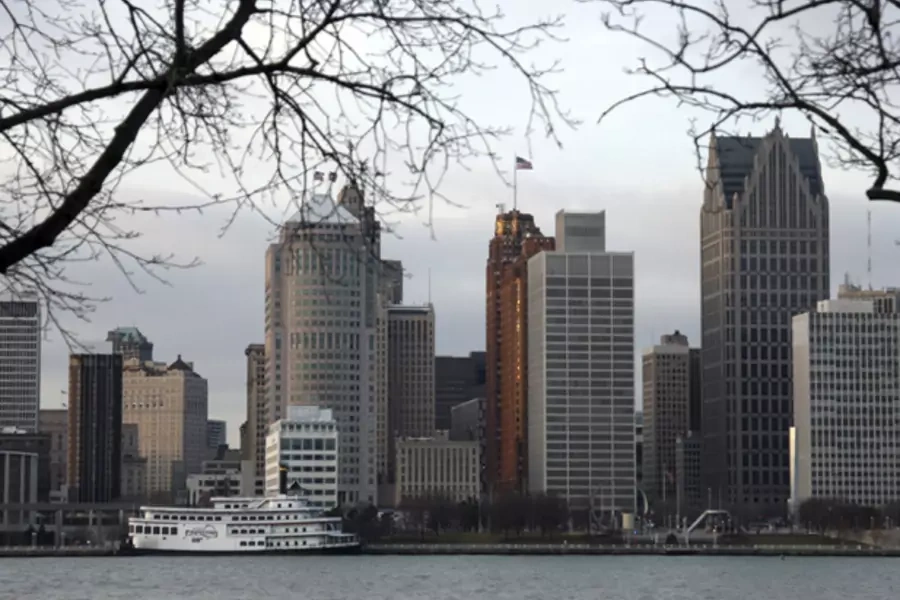To Build America's Future, Compete Aggressively For Investment

More on:
I will be traveling to Detroit this week to speak on a panel at the Techonomy conference, which is an annual event normally held in Arizona. It's a gutsy decision by the organizers to shine the spotlight on a city that Techonomy founder David Kirkpatrick noted is usually considered "a gritty, depressed, financially troubled city that seems well past its glory." The conference will highlight the transformative economic potential of modern technologies, and as Kirkpatrick writes: "If technology is the key ingredient to rejuvenating the American economy, it has to work where the problems are biggest and the task the hardest."
The post below, which looks at what governments should be doing to facilitate this transformation, first appeared on the Techonomy web site.
Here’s a chicken and egg problem. Are companies failing to invest in the United States because of its decaying infrastructure, schools that don’t produce enough skilled workers, and a byzantine immigration system? Or has the reluctance of companies to invest in the United States led to decaying infrastructure, failing education, and growing political fights over immigration?
The question is one with enormous implications for governments at all levels looking to create conditions for stronger growth. Should they invest more heavily in education and infrastructure and hope for future payoffs (build it and they will come)? Or should they hold down spending, keep taxes low, and hope that companies will invest, creating a faster growing economy that generates new revenues for education and infrastructure?
The United States clearly has an investment problem, and it’s not just a cyclical one caused by weak consumer demand coming out of the Great Recession. The U.S. share of global foreign direct investment stock, for instance, fell from over 40 percent a decade ago to less than 20 percent today. U.S. headquartered multinational companies, which created more than 4 million jobs in the United States in the 1990s, cut more than one million in the 2000s even as they continued to expand rapidly overseas.
The Harvard Business School earlier this year released an important survey of its alumni working in multinational companies, asking whether their companies were moving operations overseas, and if so why. Discouragingly, far more companies were still thinking about expanding abroad than adding jobs in the United States. And nearly half of those decisions involved research, development, and engineering activities, which are critical to maintaining the U.S. lead in innovation. Many of the respondents cited lower wages as a big incentive to move abroad, but other reasons included better access to skilled labor, fewer or less expensive regulations, and lower tax rates. The most popular recommendations for making the United States a better place to invest included a simpler tax code, immigration reform, strengthening education and training, and streamlining regulations.
One obvious response, and one I generally support, is to try to address these concerns and make the United States a more attractive location to invest. Bolstering the skills of the workforce seems like a no-brainer, for example, but there’s no gain in training young people for jobs that aren’t available. There are already too many college grads working at Starbucks. Immigration reform to attract more educated and skilled workers again seems obvious, but not quite so obvious in an economy where even U.S. college graduates are struggling to find good work. Infrastructure spending makes sense, especially when long-term borrowing costs are so low. But West Virginia has spent billions building roads, and total federal, state, and local spending accounts for more than half the state’s economy, the highest percentage in the country. And yet West Virginia is still among the poorest states. Roads alone do not make an economy.
So what should governments be doing? For one, they should be competing aggressively for investment. While other governments court multinational companies, the United States has long taken a hands-off approach, though states often take this on themselves. In the Council on Foreign Relations Task Force on U.S. Trade and Investment Policy, released last year, we call for a National Investment Initiative that would set a target for increasing investment in the United States, both by domestically headquartered multinationals and by foreign multinationals. We urged action on a variety of fronts including “education, development of infrastructure, encouragement of high-skilled immigration, expanded government support for R&D, and other initiatives that enhance the United States as a primary destination for the location of higher wage employment.” And the task force recommended an overhaul of the corporate tax system to encourage the location of business in the United States. The idea for a National Investment Initiative was endorsed by President Obama’s Council on Jobs and Competitiveness.
At the state and local level, Roland Stephen of SRI International, in a working paper for the Renewing America initiative at the Council on Foreign Relations, looked at the experience of North Carolina. The state has rebounded quite strongly from the devastating collapse of manufacturing employment over the past two decades, which was even worse there than in Michigan and Ohio. The state’s Research Triangle is a national success story. While there was no silver bullet, Stephen argues that long-term funding of education and infrastructure “are the foundation on which other policy initiatives rest.”
He calls for more targeted investments as well, particularly in building regional partnerships, technology centers, and other institutions focused on economic development. But he cautions: “Success demands patience. Economies grow slowly and payoffs come slowly. The powerful and appropriate impulse to keep score on public spending should be weighed against the need for investments of an uncertain duration with hard-to-measure payoffs.”
That’s a hard one to sell to the public in a time of fiscal constraint and diminished expectations. But if the United States doesn’t build for the future, it will pass us by.
More on:
 Online Store
Online Store